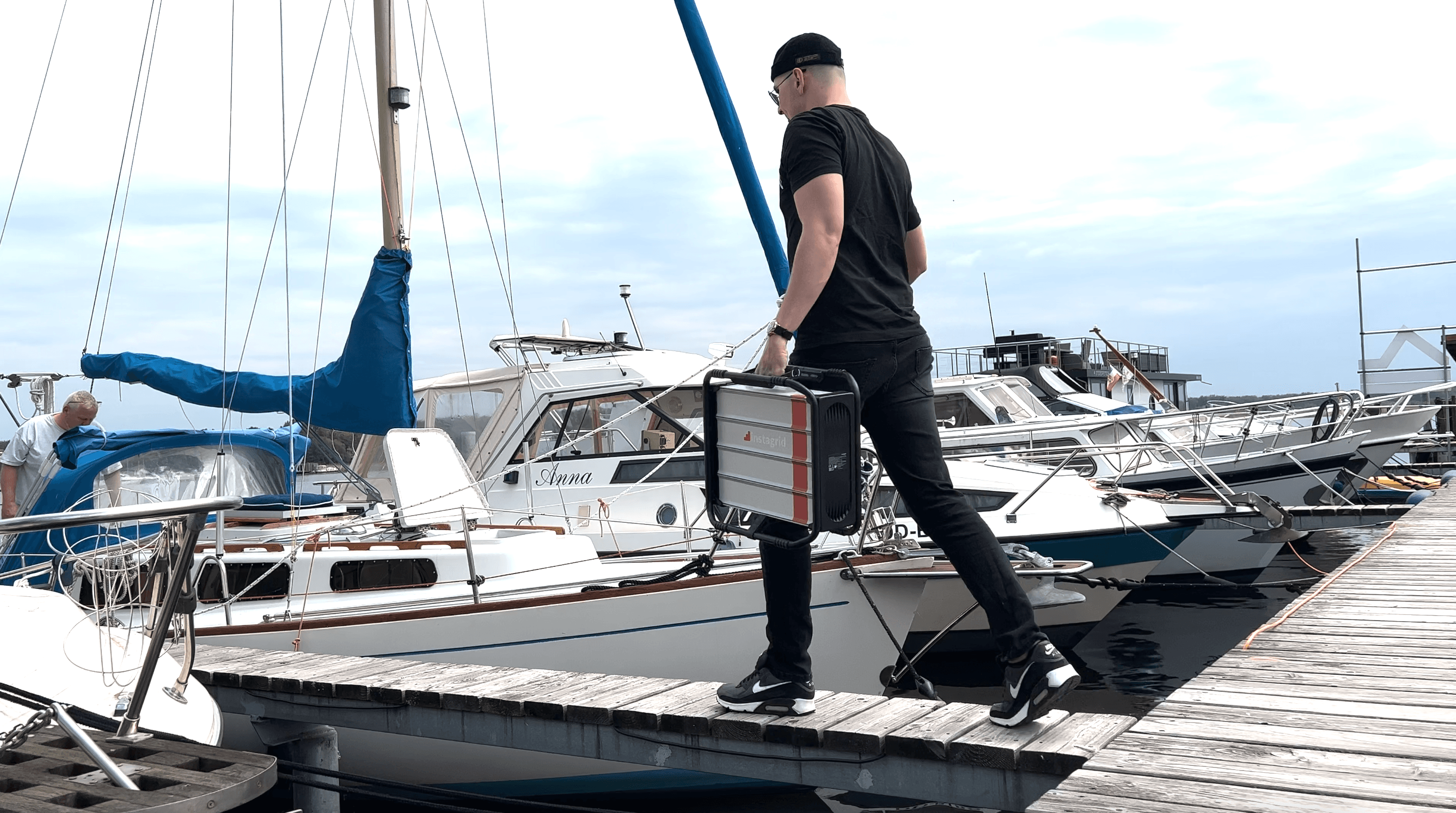If you're a boat owner, you'll know that reliable power is essential when you're out on the water. Whether you're cruising, fishing, or sailing, you need electricity to power your lights, electronics, and appliances. But how does electricity work on a yacht?
Most yachts have one or two batteries and a generator that produces electricity by burning diesel or petrol fuel. The generator can power everything on board, from lights and navigation systems to air conditioning and refrigeration. However, generators can be noisy, bulky, and expensive to maintain. In addition, they emit exhaust fumes that are harmful to the environment.
Another option is to use solar panels to generate electricity. This is a clean and sustainable way to power your yacht, but it requires a significant upfront investment and may not provide enough power for all your needs.
Our Instagrid ONE max are designed to be lightweight, compact, robust and incredibly powerful. With advanced lithium-ion technology and intelligent management systems, our batteries ensure a safe, reliable, and sustainable power source for boats.
The good news is: it’s never been easier to install the Instagrid ONE max in our boat. How? Check the video below and follow the instructions.
230V on a boat thanks to instagrid ONE max
First, here’s what you’ll need:
1x CEE wall - socket 16 A
1x CEE wall - plug 16A
1x CEE adapter Schuko coupling
1x CEE adapter Schuko plug
6x Wire connectors
2x Tube plastic clamps
Wire stripper
Screws
Screwdriver
How to install the Instagrid ONE max in your boat:
If you want, like Torsten in the video, get rid of the solar panels, the old battery, charger, inverter, load balancer and cables. You won’t need them anymore.
Once you’ve freed up some space, place the Instagrid ONE max where you want it to be. The best spot is next to the fuse box of the boat.
Open the fuse box and disconnect the supply line from the shore power connection.
Locate the cable that brings electricity to the fuse box from the outside. Cut it in half.
Strip each end of the cable. You should have access now to the three smaller cables inside.
Peel the extreme of each part and secure the wire connectors on all six cables.
Connect the cables to the sockets: the female socket should be connected to the cable that goes out and the male socket to the cable that goes to the fuse box.
Secure both sockets to the wall.
Optional: secure two plastic clamps to the place where you want the Instagrid ONE max to be. You’ll be able to pinch the frame of the Instagrid on them and it won’t move.
Connect the charging cable of the Instagrid ONE max to the female socket. Connect the cable going out of the Instagrid ONE max to the male socket.
You will then be able to use your fuse box as you did before!
